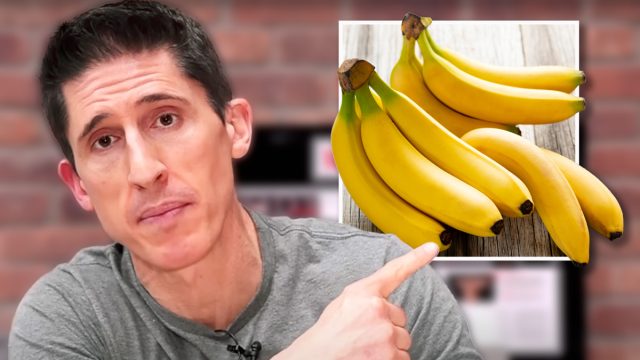I'm a Strength Coach, and Here Are 6 Foods I Will Never Eat
Do you ever wonder what foods health experts avoid? Physical therapist and strength coach Jeff Cavaliere educates his YouTube followers with the same knowledge he shares with his professional athletes and celebrity clients. In a recent video, he reveals key foods he avoids eating and that you should too if you are "looking to clean up your diet and remove some foods that are making you fat," she says.
They "may be keeping you unhealthy," and you don't even know it, he maintains, "and we're making our decisions based on science and the latest research that points us towards better food options," he writes in the caption of the post.
Bananas
In the clip, he explains that he used to add bananas to his smoothies but learned that "bananas have an enzyme in it called polyphenol oxidase. It actually degrades polyphenols," he says. "This was a human study that came out recently," he says, noting that adding the fruit to berry smoothies decreased "metabolites of polyphenols."
So, "if you're trying to get the benefits of blueberries," you could be "undercutting your sole purpose by including a banana in that smoothie of yours."
Whole Grain Bread
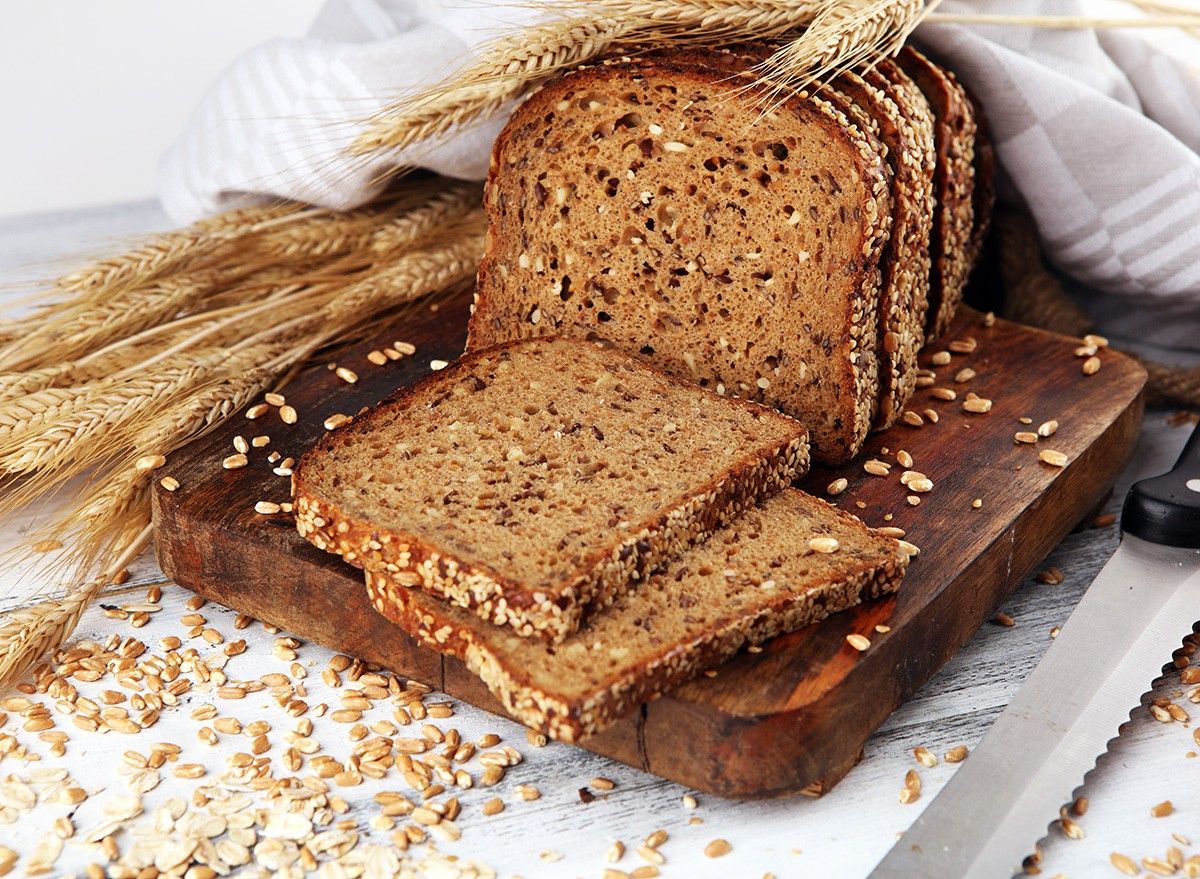
Whole grain bread sounds healthy, but according to Cavaliere, it takes "a long time" for your intestine to digest it, "and we don't have enzymes that work very well for that," he says. "That's why a whole grain is good; it's a delivery system for getting the food further down the intestine to feed your bacteria."
However, "whole grain bread in the supermarket is not whole grain because the grains have been pulverized to smithereens," he says. "Now you consume it, and the starches are immediately acted on by the saliva and the stomach. And now you liberate all of that glucose, and it goes via the portal vein to the liver, generates an insulin spike, and you're off to the races in terms of chronic metabolic disease."
RELATED: I'm a Nutritionist and Here Are 19 Protein Truths You Need to Hear
This Canned Soup (But It's Personal)
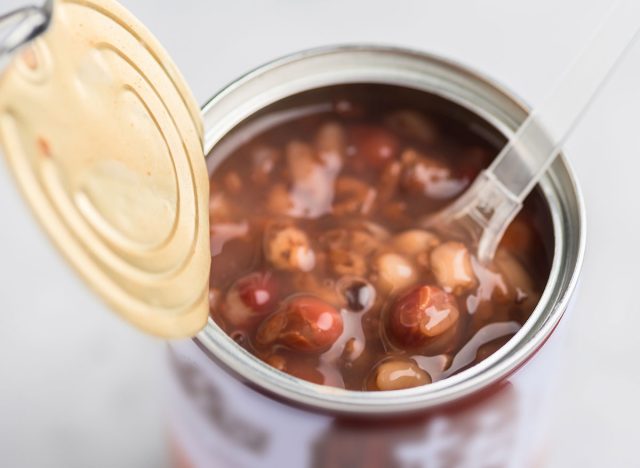
Next up, white bean soup. He explains that it's "a very personal choice" of his but stems from getting a norovirus that induced vomiting. "Unfortunately, every single time that I see white bean soup to this day, I get nauseous, and I wanna throw up," he says. However, canned soups, in general, aren't great for you, he explains.
"If you look at the amount of sodium that's contained in a canned soup, you might run away and hide as I have forever, and don't fall for the label lies where they make you think that there are only 800 and 900 milligrams of sodium in that can of soup because it is for two servings and nobody eats just half a can," he points out. "It's all due to the preservation that's required to make canned foods last for a long time," he says. "The bottom line is soup is an amazing addition to a healthy meal plan that actually gives you a convenient way to get the vegetables in a day that you might be missing right now. But you gotta make sure you're making it yourself, and you're not just relying on the cans on a shelf."
Artificial Colors
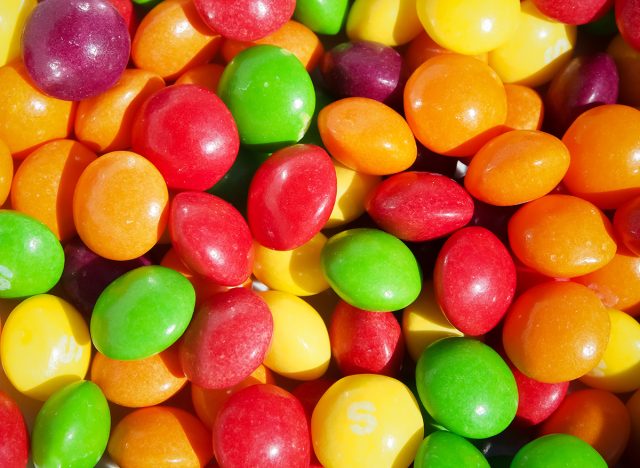
The next one is artificial dyes, "you know those colors of the rainbow with a number attached to it at the end, red number 40, blue number one, yellow number five, or number six," he says. "The bottom line is, guys, you should look to avoid these at every single turn."
He notes that "there is some scientific literature linked to increased hypersensitivity and hyperactivity in kids" and "beyond that, there are immunosuppressive effects that have been linked to these dyes, supposedly even at safe levels, whatever that might be, or even carcinogenic links that have suggested that long-term use of these could lead to cancer." He doesn't want to "name names, but read the back of your label," he says.
Farm Raised Salmon
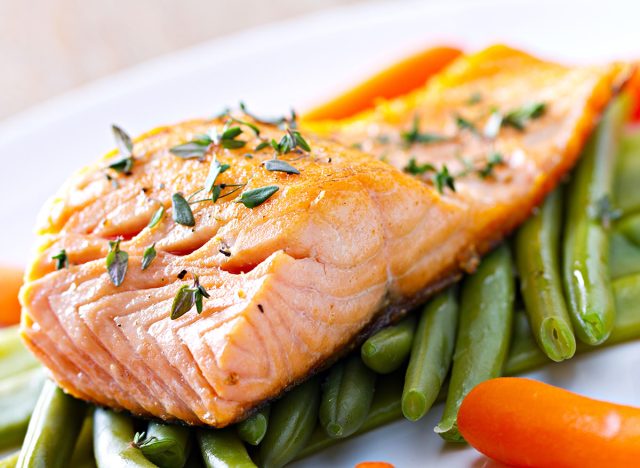
The next item is farm-raised salmon. "The natural color of farm-raised salmon is actually this very pale, almost white, but the way that they make it look like this is through the inclusion of some of the very same food colorings in the feed that they supply these farm-raised fish," he explains. "Once again, the recommendation is to always seek out whatever it is you're eating in its most natural form.
Wild-caught fish is going to be better for you than farm-raised fish every single time. The bottom line is to make sure you're also getting it from a reliable source. Because with all fish, no matter whether they are farm raised or wild caught, you're still going to have to be concerned about heavy metal contents in high levels of mercury."
RELATED: I'm 70 but Look 40 After Sculpting My Body with 2 Unexpected Exercises
Yogurt
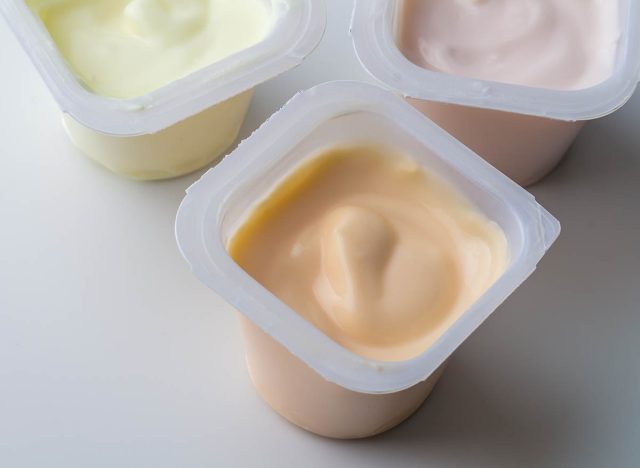
"Yogurt has active cultures, and active cultures help populate the intestine with good bacteria. The question is, if these foods worked, why would you have to keep eating them? If they're live cultures, they reach the intestine, which is nice and dark and murky, and certainly bacteria are growing in there. Why don't they just set up shop? And the answer is because they're not living anymore. They died," he says.
"That's the reason why you needed them is because your own died because you have an inhospitable intestinal environment. So you don't need a probiotic. You need something that will let the bacteria grow. You need a prebiotic. Well, what's the prebiotic that's in real food fiber? It's been taken out of processed food," he says. "I will continue to eat yogurt only because I do believe that I'm getting that prebiotic portion of the equation right.
By eating lots of fiber every single day, you can even go back to the whole grain bread. If you're getting things like that right, and you're eating enough of the vegetables, not the canned kind, but the regular vegetables, you should be providing your body with enough of the fiber to create that environment that's necessary for the good bacteria colonization of your digestive tract.
So even though the yogurt portion of my diet may not really be hitting it out of the park, and I might actually be providing myself with a bunch of dead bacteria in the process, I still think that, as he said, the most important part is getting the fiber portion down to create a better environment for the yogurt that you are eating. Therefore, continue to eat your yogurt, but make sure you're not avoiding your fiber." And if you enjoyed this article, take advantage of these 15 Quick Ways to Lose Body Fat Percentage in a Week.
